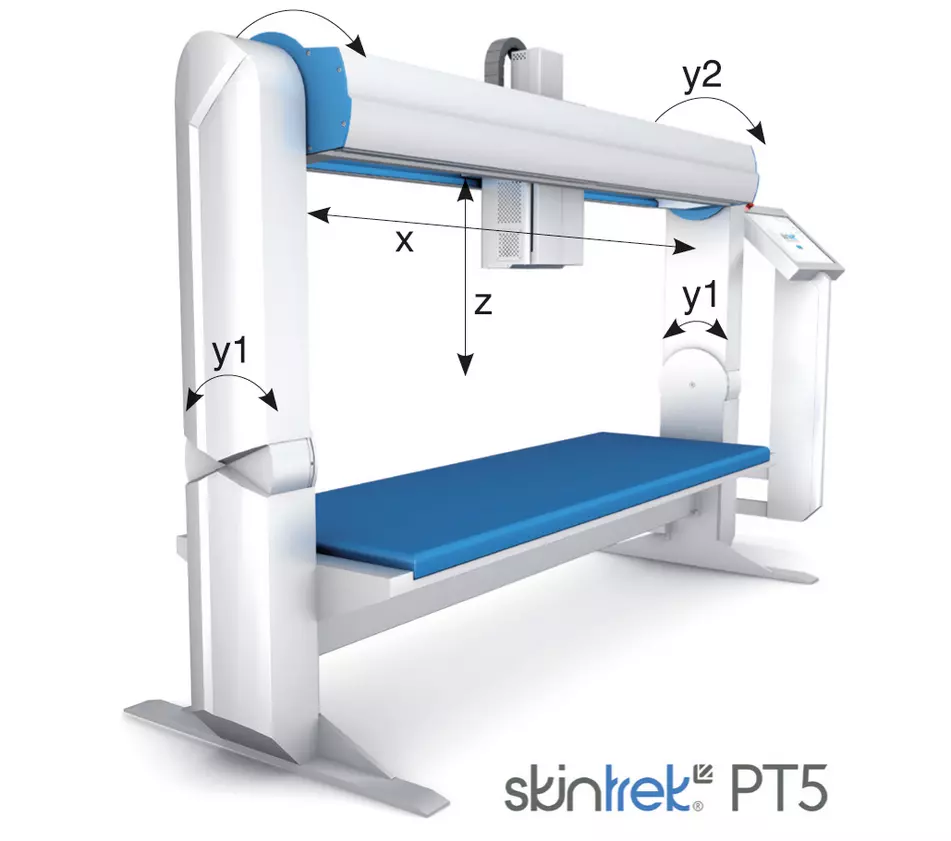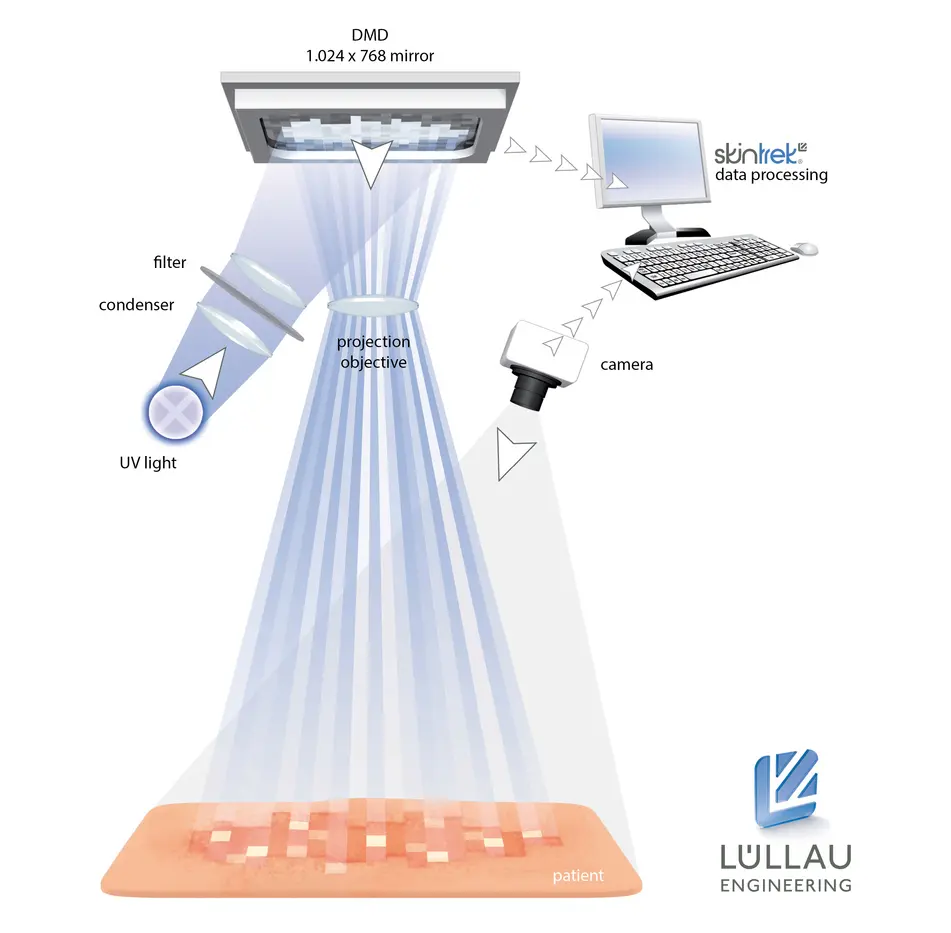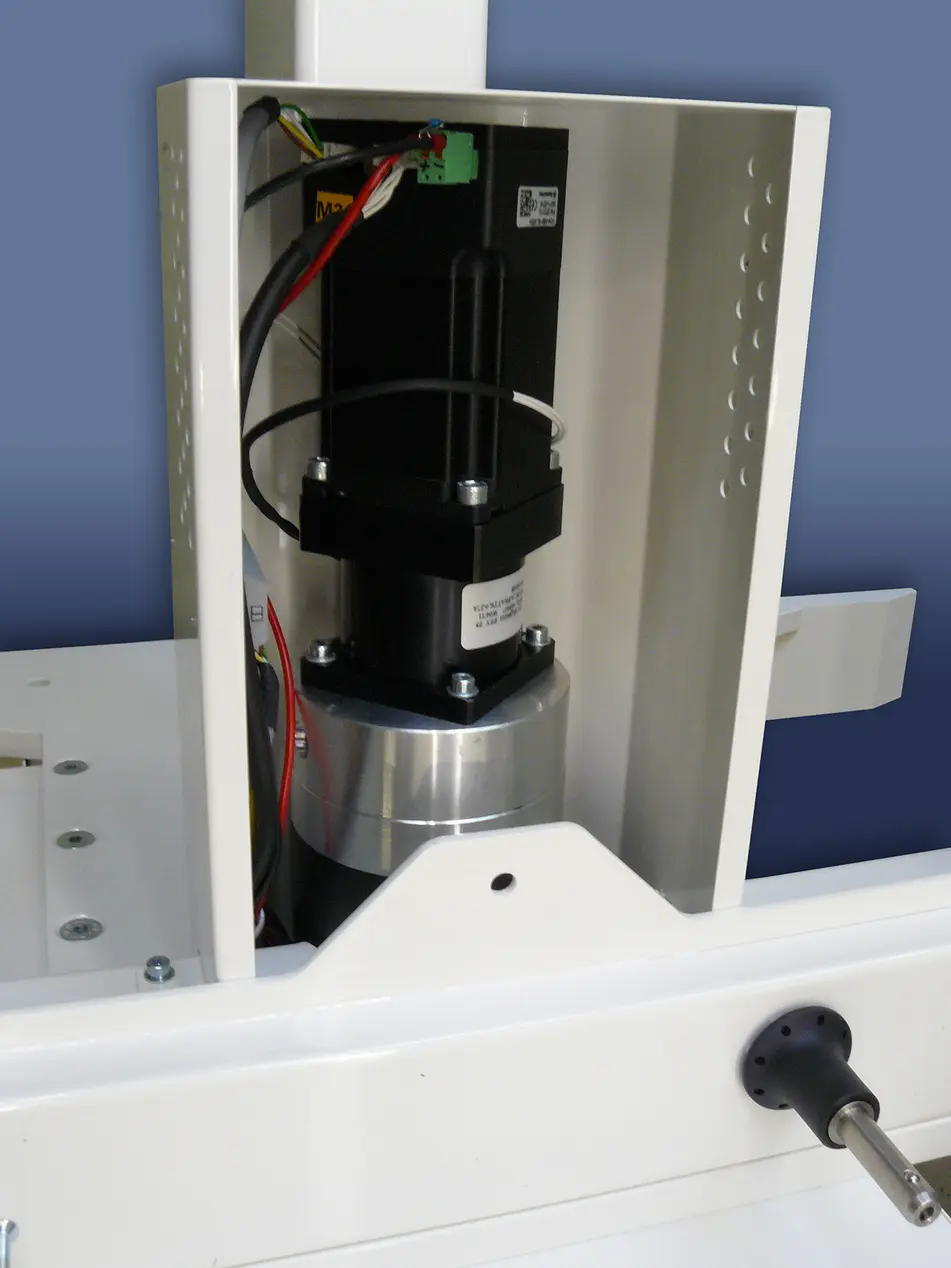Lüllau Engineering relies on high-precision stepper motor technology for the skintrek® PT5 phototherapy device
The skintrek® PT5 medical UV radiation device is the most innovative technology currently available on the market for irradiating skin diseases. It became apparent during development that simple component interchangeability was extremely important. There are two phototherapy processes for providing UV radiation for skin diseases such as psoriasis, vitiligo and eczema: a normal one, in which the skin is irradiated with a floodlight, and a digital one. In the latter case, the UV radiation is converted into a pixel matrix. The individual beams, which are controlled independently from each other, only expose areas of the skin that are afflicted with the disease.

"During treatment it is important that as little healthy skin as possible is irradiated in order to minimize the risk of skin cancer," explains Friedrich Lüllau, who is considered the founder of digital phototherapy. The development goal of the new skintrek® PT5 UV radiation device was to avoid exposing healthy skin, even if the patient moves. The exposure head has to be able to follow the slightest of movements.
This four-dimensional mobility was realized using high-precision stepper motor technology. Seven Nanotec stepper motors plus the motor controllers are found in the device. The motors of choice were Plug & Drive motors, which contain the motor, the motor controller and the encoder within their housing. Advantage: limited cabling requirements. "All you need are the power supply and interface cables; the motor and encoder lines are already integrated," says R&D Manager Dr. Matthias Kock.
Same bore, twice the power
In the crossbeam (Y2 axis) in which the exposure head is mounted, there is a PD4-N6018 model with 3.54 Nm holding torque. This drive demonstrated that the actual performance requirements often differ from plans. In this case, the holding torque of the originally favored PD4-N5918 variant proved to be inadequate during real-world testing. A torque of 3Nm was required instead of 1.5Nm. The result was almost twice the holding torque with just a 4mm x 4mm larger size and the same borehole size, without the need for expensive redesigning. The motor functions as a swivel drive that can rotate the exposure crossbeam to 20° degrees on each side in order to expose the side areas of the body with greater precision.
The exposure unit (Y1 axis) is adjustable around a pivot point at the height of the bed so that the exposure head covers all areas of the body, even the sides. An autonomously running, but synchronously switched, PD4-N5918 Plug & Drive motor is located on each side. The exposure head is stored in the cross member, together with the UV light source, color filter disk, light modulator and camera. The radiation from a UV light source is bundled by a collimator and filtered as needed or by adjustment so that either UVA radiation with a 320-400 nm spectrum or UVB radiation with a 300-320 nm spectrum reaches the digital light modulator. The beam of light is digitized into approximately 800,000 individual beams (pixel beams). Based on image recognition combined with a dosage calculation, only those pixel beams that will impinge on the afflicted areas of the skin will be switched on.
Closed loop for smooth-running operation
There is a color filter between the light source and the light modulator. Depending on the type of skin disease being treated, the color filter disk positions a color spectrum appropriate for exposure by means of ST2018 stepper motors, which are controlled using a controller developed in-house. The exposure unit moves back and forth in the crossbeam (X axis) and its height can be adjusted (Z axis). In the interest of uniform drive architecture, a PD4-N5918 motor was chosen for the X-axis as well. The height is configured using two ST4118 stepper motors plus a SMCI47 motor controller, combined with a linear guide, in closed loop mode.
The skintrek® PT5 device has been on the market since the beginning of 2012. Looking back on 2 years of development, Dr. Matthias Kock concludes, "It was certainly the right choice. Our cooperation with Nanotec has been very productive and effective. The motors also exhibit very quiet operating performance in closed loop mode."


